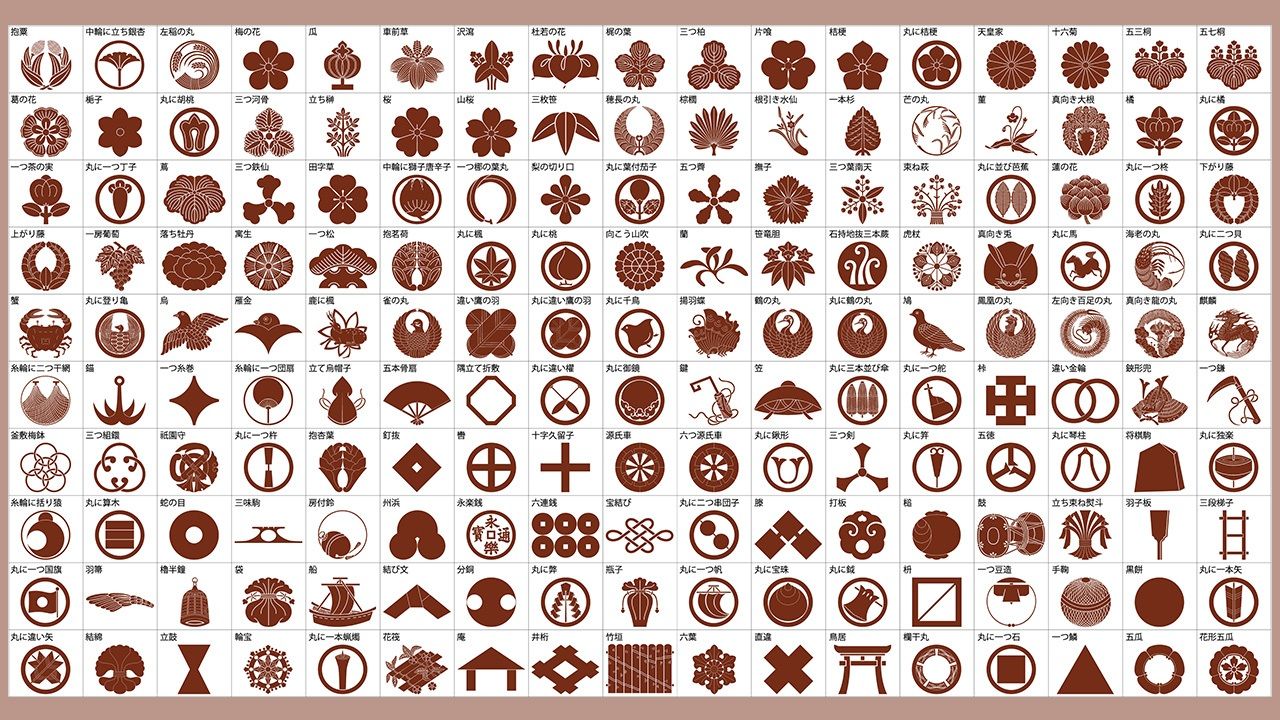
“Kamon”: Japan’s Family Crests
History Design Art Culture- English
- 日本語
- 简体字
- 繁體字
- Français
- Español
- العربية
- Русский
Kamon, or family crests, are thought to have come into use around the tenth century among the Japanese aristocracy.
They were markers that identified both individuals and families. The aristocracy during the Heian Period (794–1185) had a fixed hierarchy based on status, so for example, when one noble riding in an ox-drawn carriage met another’s carriage on the road, the noble of lower status had to give way. Family crests were added to the carriages to clearly convey this sign of status.
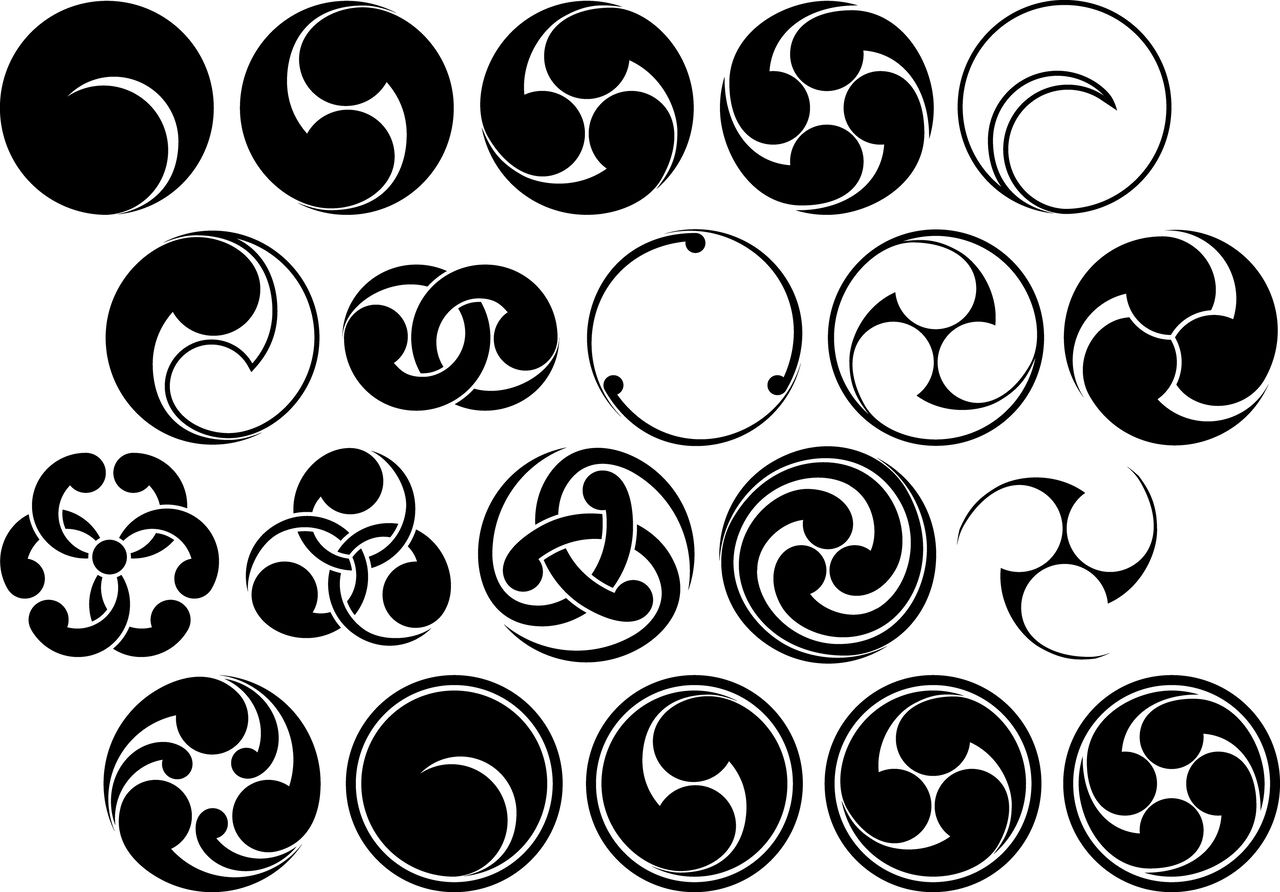
Crests showing variations in the tomoe swirl. (© Pixta)
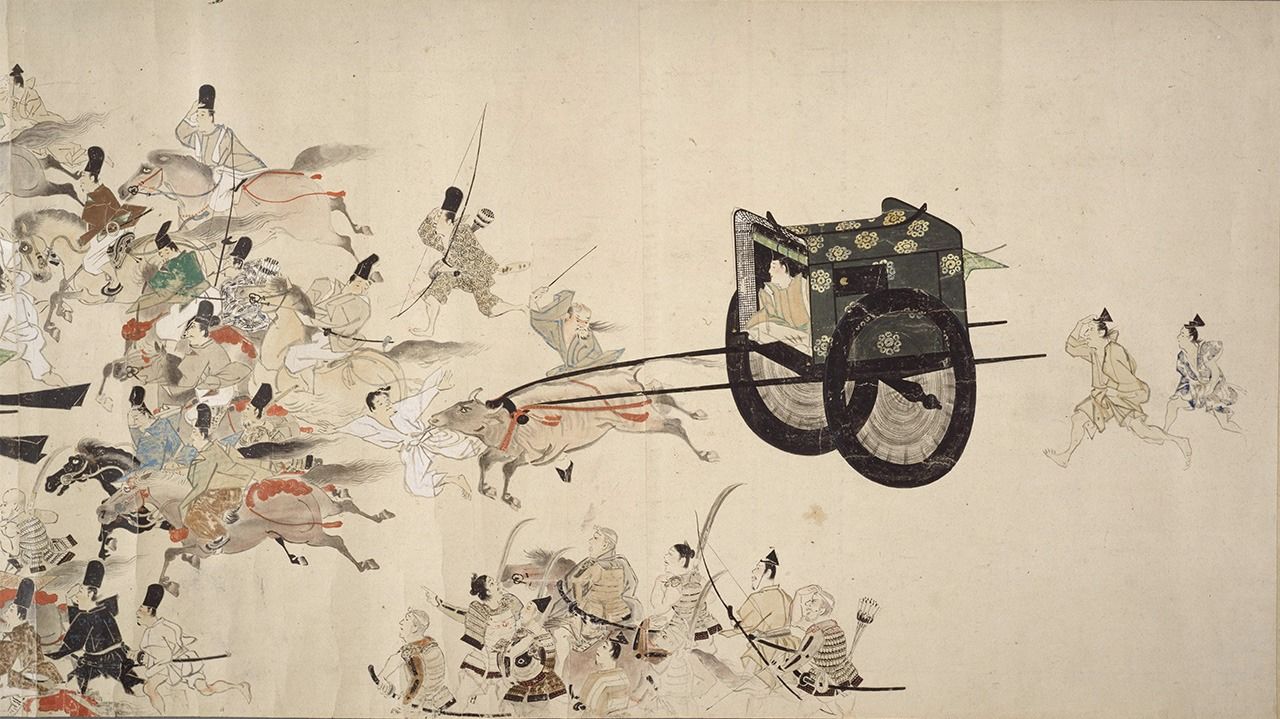
In the Heiji monogatari emaki, an illustrated narrative handscroll depicting the Genpei War, nobles’ carriages can be seen involved in the fighting. The crest depicted here is the kuyōmon, a type of star crest, symbolizing nine heavenly bodies. It is believed to ward off evil. (Courtesy the National Diet Library)
At some point, crests also started appearing on clothing and being used by the bushi warrior class. Entering the Muromachi period (1333–1568), there were cases of common people using kamon, such as merchants putting crests on their shop signboards, which then became family crests. In later times, kabuki actors adopted them too. From the Edo period (1603–1868) onward, common people were given permission to choose their own family crests for use, with the exception of the kikumon (chrysanthemum crest) belonging to the imperial family and the aoimon (hollyhock crest) of the Tokugawa clan. By around the end of the seventeenth century, use of family crests had become firmly established among the general public.
Kamon Symbols and the Five Major Crests
The main categories for the symbols used in kamon are animals, plants, nature, buildings and vehicles, and receptacles and patterns.
Among animals, turtles and cranes are common; they both symbolize longevity and so carry the meaning of bestowing the wish of a long and prosperous life on the family.
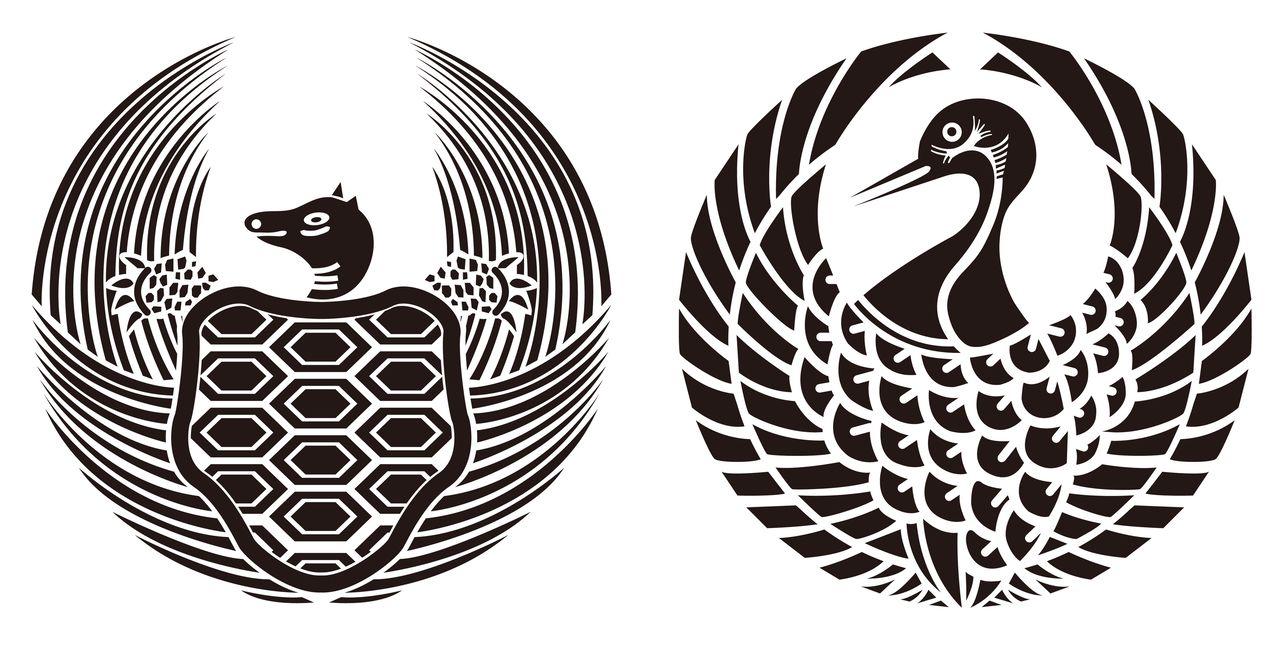
Kamon that express the wish for longevity: a noborigame (“rising turtle”) and tsurumaru (“crane circle”). (© Pixta)
Botanical crests, using symbols like wisteria and peonies, represent fortune and fame (wealth and high status), as well as portraying a sense of elegance. The Tokugawa hollyhock is an example of this type of crest.
Among the kamon for buildings and vehicles is the kurumamon, a “carriage crest” depicted by the symbol of a wheel. This use of the ox-carriage as a motif would have indicated the prosperity of the nobility. An example of a building-type crest is the toriimon, where the symbol of a torii shrine gate shows that the person is from a family of Shintō priests.
Crests that feature natural motifs like the moon, mountains, and thunder are used to convey a faith that is respectful of nature or offer prayers for a good harvest. One of the receptacle and pattern crests is kuginukimon (“nail puller crest”); this representation of a tool is used by people involved in construction. The hikiryōmon (parallel lines crest) is an example of a pattern-type crest, but its origin is unclear. One theory is that it is a variation of the shape of a dragon.
In this way, each family crest has its own meaning.
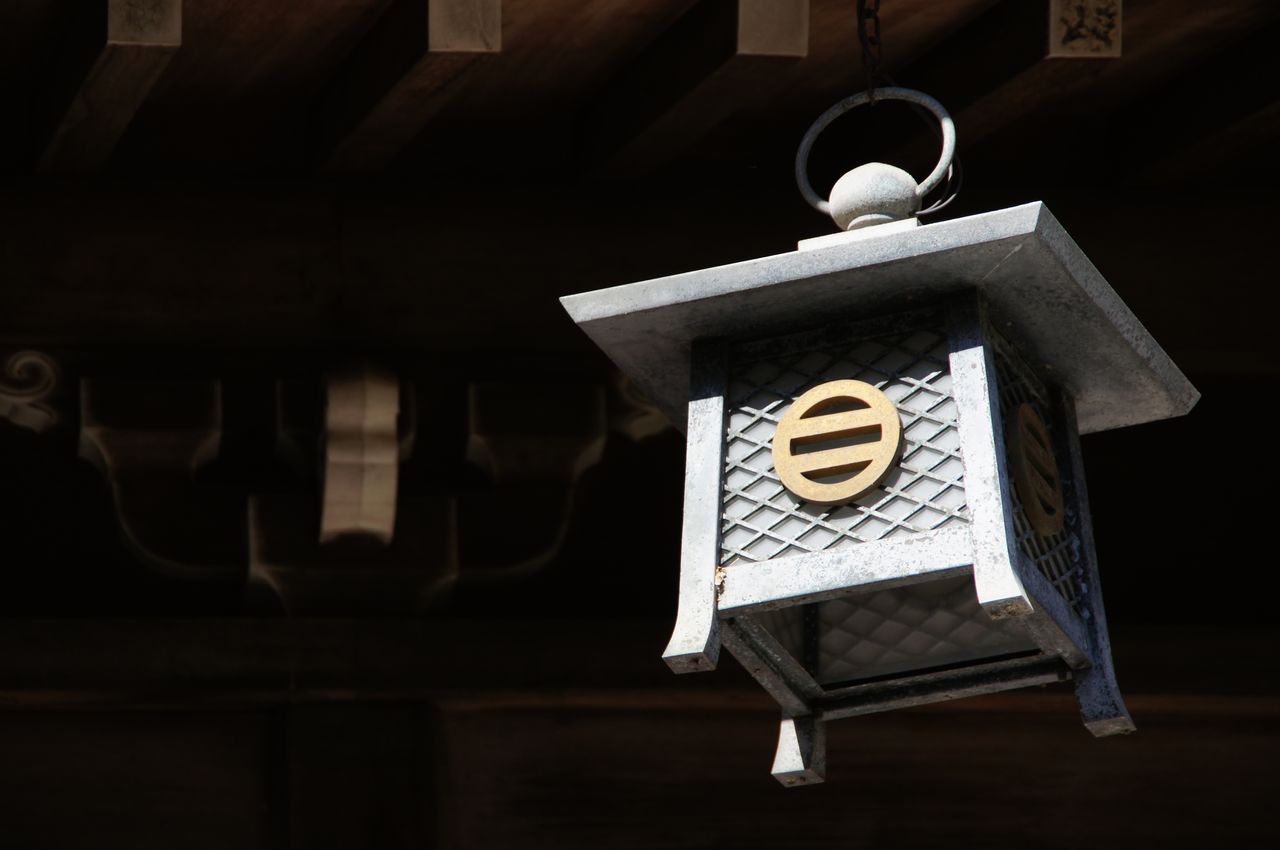
The Ashikaga clan kamon with two horizontal lines inside a circle. Variations of this hikiryōmon can include one or even three horizontal lines. (© Pixta).
Five symbols in particular are frequently used—wisteria, paulownia, hawk feathers, flowering quince, and creeping woodsorrel—and these have become known as the godaimon or five major crests. In Kamon no Daijiten (Family Crest Dictionary), however, oak is given as an alternative for paulownia.

The five major kamon, from left to right: wisteria, paulownia, hawk feathers, flowering quince, and creeping woodsorrel. (© Pixta)
Today, there are thought to be between 20,000 and 25,000 family crests in use in Japan.
In addition to the standard jōmon crests used officially by families, there are kaemon, which are crests that have been altered and are used unofficially by individuals. There are also onnamon—after a woman gets married, she may create a “woman’s crest” using elements of her original family crest. In this way, more and more new crests are emerging and it is not possible to ascertain their actual number. With this creation set to continue, the number is sure to increase further.
(Translated from Japanese. Banner image © Pixta.)